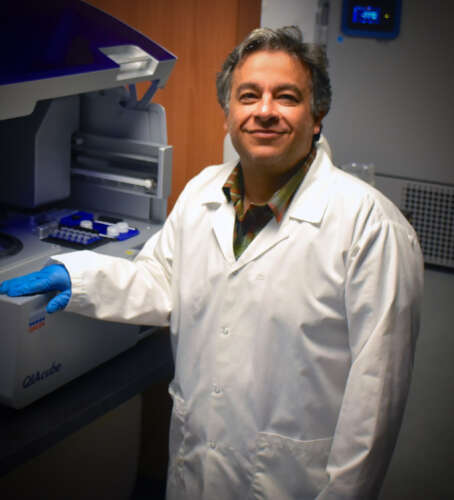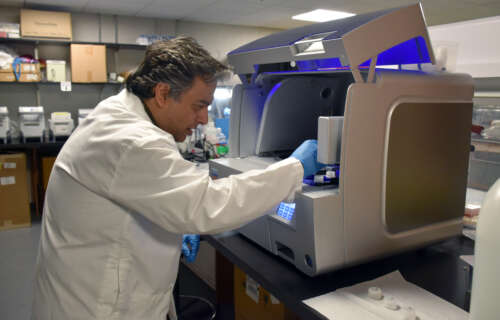Current methods for assessing the health of busy waterways like Toronto Harbour may not reveal the full picture, suggests new research from the University of Guelph.
In a new paper recently published in Nature Scientific Reports, U of G-developed DNA metabarcoding technology was shown to be more effective at assessing biodiversity in the harbour than when traditional methods are used alone.
Researchers with U of G’s Centre for Biodiversity Genomics (CBG) worked with colleagues at Environment and Climate Change Canada to assess the water quality in Toronto Harbour, a major economic hub connecting the Great Lakes that is used for leisure boating, swimming and more.

They found that the metabarcoding approach provided a more precise and comprehensive picture of species in the sampling locations as compared to conventional approaches.
“This study showed that DNA metabarcoding can be an important complementary approach to conventional assessment methods and offers a more well-rounded look at the health of an urban waterway,” said lead researcher Dr. Mehrdad Hajibabaei, an expert in molecular biodiversity and integrative biology professor in the College of Biological Sciences.
Toronto Harbour has been designated an Area of Concern for more than 30 years due to water quality issues from human activity such as chemical spills, stormwater runoff and industrial pollution.
One of the main ways of measuring improvements in the harbour is by monitoring the diversity of insect larvae and other macroinvertebrates in the lake bottom, known as benthos. A higher diversity of invertebrates is a sign of a healthier water system.
Conventional techniques see trained taxonomists examine benthos samples to identify organisms under a microscope. The process, however, is slow, prone to human error and costly, so assessments can be done only every few years.
Metabarcoding revealed organisms not detected by conventional methods

DNA metabarcoding, pioneered by Dr. Hajibabaei at U of G, builds on DNA barcoding techniques to simultaneously identify many species at once from a single environmental sample. The approach uses advanced molecular biology and DNA sequencing technologies to read DNA of organisms directly from the environment such as benthic samples, soil or water.
“We use a series of highly-scalable specialized software tools to ensure data quality and accuracy while profiling whole communities of macroinvertebrates and other organisms,” said Dr. Teresita Porter, study co-author and research associate at the Hajibabaei lab who developed and performed computational data analysis for this study.
The research team’s metabarcoding analysis of the harbour benthos revealed a large number of organisms not detected using conventional methods, even among key bioindicator species.
Microscopic examination found an average of nine species per sampling station, while one form of metabarcoding detected 15 per station and another found several times more.
Metabarcoding was also able to identify species tolerant to high levels of sediment contaminants such as metals and aromatic hydrocarbons. The distribution of these species correlated with known patchy distributions of contaminants in the harbour.
Critical signs of environmental degradation may be missed
“These are critical findings because it’s not just the bigger and more common organisms that you can easily identify that are important,” said Hajibabaei. “Little organisms that are harder to see in the usual measurement have a role to play in the ecosystem and their analysis is important to spot fine-scale changes that have occurred across contaminant gradients.”
By relying on conventional approaches, researchers and regulators may be missing subtle but critical signs of environmental degradation, Hajibabaei said.
“This fine-scale resolution is essential for environmental health analysis and management in a dense area like the Toronto Harbour. It is key to understanding species-specific responses to environmental disturbances and climate warming effects.”
Funding for the research was provided through Environment and Climate Change Canada’s Great Lakes Action Plan in conjunction with Genome Canada and Ontario Genomics.
Co-authors included Dr. Chloe Robinson, Dr. Teresita Porter, Dr. Katie McGee, Hajibabaei Lab Manager Michael Wright, and Dr. Megan McCusker of Environment and Climate Change Canada.
Contact:
Dr. Mehrdad Hajibabaei
mhajibab@uoguelph.ca
Tamanna Kohi
tkohi@uoguelph.ca
